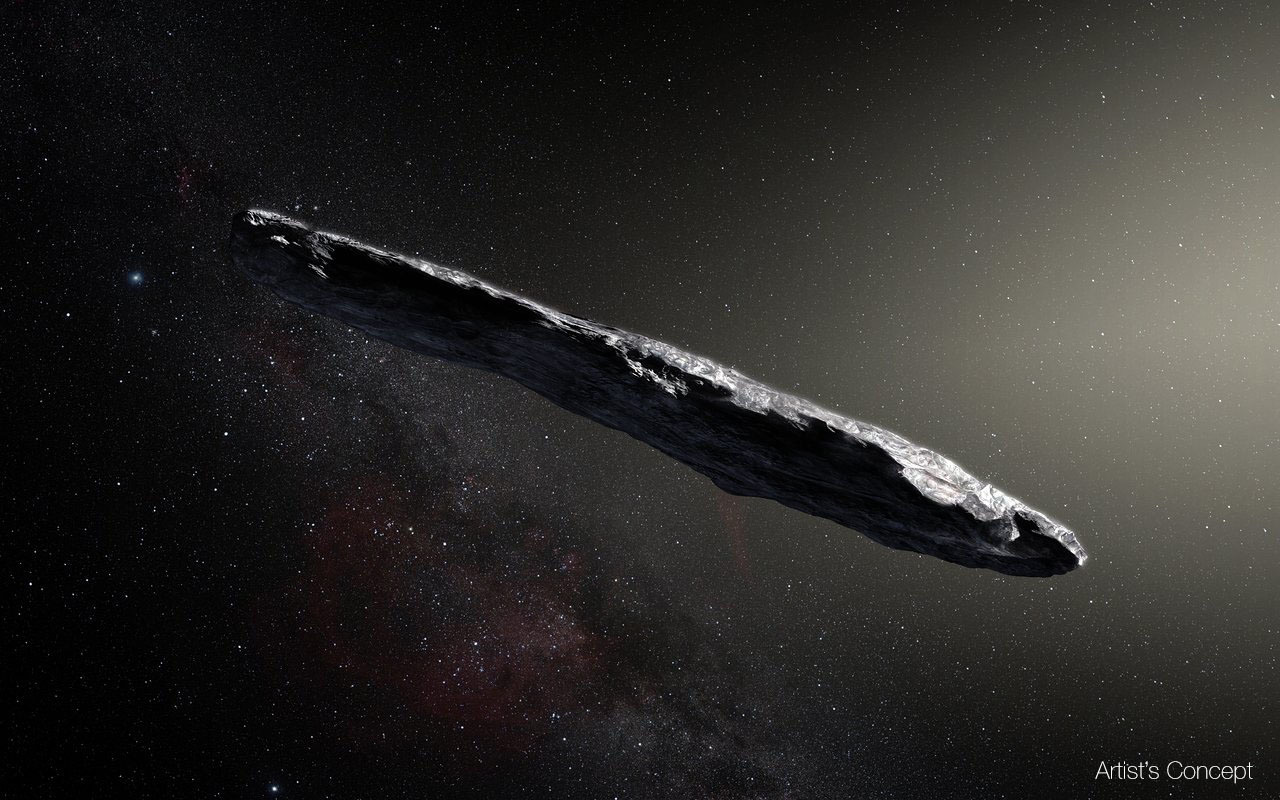
SETI - the search for extra-terrestrial intelligence and exobiology - the search for extra-terrestrial life are two of the most interesting scientific endeavors of our generation. The odds of finding extra-terrestrial life may be low, but, increasingly, they seem not that low. As we learn more about the universe, the likelihood of finding planets with conditions that could harbor life seems higher and higher. Over the past 20 years, we have learned that planets around other solar systems are common, and that, probably, there are planets in the 'habitable zone,' where liquid water can exist.
One recent event has further stirred interest. A large rock - named 'Oumuamua, Hawaiian for scout - flew by the Earth in 2017. It attracted enormous attention, for several reasons. First, it was moving very fast - too fast to be in orbit around the Sun. So, it most likely came from outside the solar system, making it the first interstellar object that we have studied. Second, it was exhibiting signs of acceleration, although some scientists attributed this to natural outgassing as the object was warmed by the Sun.
Second, as the picture above (a NASA artists conception, based on optical and radar imaging) it was long and thin, measuring between 300 and 3,000 feet long, with a width and thickness between 115 and 550 feet. This is not as expected for natural bodies. The large objects (planets and planetoids) that we can see are fairly round, and, while smaller objects like asteroids and the solid parts of comets are fairly irregular, they are not that irregular.
All this led to speculation that 'Oumuamua might be an alien spacecraft visiting our solar system. There are reasons to wonder - although a gravitational slingshot acceleration in another solar system could possibly explain the acceleration, the probability of an object from another solar system randomly coming so close to Earth (85 times the distance to the Moon) is very very low, unless these objects are very common. but, it seems hard to explain how they could be naturally accelerated to such high energies, so it seems unlikely that they are common.
These observations of course spurred searches for similar objects. One interesting search started by looking for similar high-velocity objects that might have been spotted by early-warning radars. One such trace from 2014 appeared to show a high velocity object, consistent with a diameter around 1.5 m hitting the Earth, near Papua New Guinea. Harvard astronomer Avi Loeb assembled a team to search for debris from that meteorite. The team has presented evidence of tiny metallic spherules with 'a chemical composition of unknown origin.' This has been hotly debated, and other groups have claimed that the spherules are from coal ash. The debate continues, but, extra-ordinary claims require extra-ordinary proof, so it is, at-best, premature to bet on the extra-terrestrial origin.
But, the unusual characteristics of 'Oumuamua are well supported by multiple observations, and are well accepted in the scientific community. Clearly something very interesting passed by, and we as a community should be thinking broadly about follow-up studies.

No comments:
Post a Comment